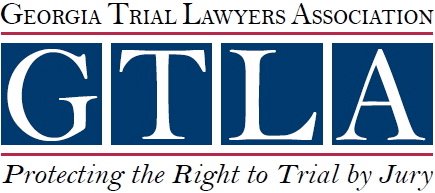Product liability claims in Georgia arise when a consumer suffers injury or damage due to a defective product. These cases can involve a wide range of products, from household appliances to automobiles, and even pharmaceuticals. However, proving that a product was defective and that the defect directly caused injury requires more than simply presenting the damaged product. To succeed in a product liability claim, substantial evidence is needed. This evidence not only strengthens the claim but also plays a pivotal role in securing fair compensation for the injured party.




Understanding Product Liability in Georgia
Before delving into the types of evidence necessary for a strong product liability claim, it is important to understand the legal framework governing such claims in Georgia. Product liability cases generally fall into three categories: design defects, manufacturing defects, and failure to warn (also known as marketing defects).
Design defects occur when a product is inherently dangerous due to its design, even if manufactured perfectly. Manufacturing defects, on the other hand, arise when an error during the production process results in a product that is different from the intended design and poses a danger to consumers. Failure to warn claims involve situations where a product is dangerous in a way that is not obvious to users and where the manufacturer has failed to provide adequate warnings or instructions about the risks associated with the product’s use.
In Georgia, the legal basis for product liability claims is generally strict liability. This means that the injured party does not need to prove that the manufacturer was negligent, only that the product was defective and that the defect caused the injury. However, to prove these elements, strong and compelling evidence is essential.
Preserving the Defective Product
One of the most crucial pieces of evidence in a product liability claim is the defective product itself. Preserving the product in its post-accident condition is vital, as it serves as the primary physical evidence of the defect. The condition of the product can provide insights into whether the defect was due to a design flaw, a manufacturing error, or a lack of adequate warnings.
If the product is discarded, altered, or repaired after the incident, it may be challenging to prove that the defect existed and that it caused the injury. Therefore, it is essential to keep the product in a secure location and ensure that it remains unaltered until it can be examined by specialists or presented in court.
Photographs and videos of the product immediately after the incident can also serve as supplementary evidence, especially if the product is too large or dangerous to store. These visual records can capture details that may not be apparent in a physical inspection conducted long after the incident.
Documenting the Incident and Injuries
Detailed documentation of the incident and the resulting injuries is another critical component of a strong product liability claim. This includes medical records, accident reports, and personal accounts of the event. Medical records, in particular, are essential as they provide an official account of the injuries sustained and the treatment received. These records can help establish a clear link between the defective product and the injuries suffered.
In addition to medical records, accident reports filed with law enforcement or other authorities can offer an objective account of the incident. These reports often include details about the scene of the accident, witness statements, and other relevant information that can support the claim.
Personal accounts of the incident, either in the form of written statements or oral testimony, can also play a significant role in a product liability case. These accounts should include details about how the product was being used at the time of the incident, any unusual behavior of the product, and the immediate effects of the injury. While personal testimony can be compelling, it is often most effective when corroborated by other forms of evidence.
Obtaining and Preserving Witness Testimony
Witnesses who were present at the time of the incident or who can attest to the condition of the product before and after the accident can provide valuable testimony in a product liability claim. Witness statements can help establish a timeline of events, describe the circumstances surrounding the incident, and provide an objective perspective on the defect and its impact.
To preserve witness testimony, it is important to obtain statements as soon as possible after the incident while the details are still fresh in the witness’s mind. These statements can be recorded in writing or captured on video. In some cases, witnesses may also be called upon to testify in court, so having detailed and consistent statements from the outset can be crucial.
It is also worth noting that in some cases, witnesses may be necessary to explain complex aspects of the product’s design, manufacturing process, or the nature of the defect. These witnesses can provide authoritative opinions that bolster the claim. However, obtaining such testimony requires careful selection and preparation to ensure that it aligns with the overall strategy of the case.
Gathering Relevant Documentation
Beyond preserving the defective product and documenting the incident, gathering relevant documentation is essential to strengthening a product liability claim. This documentation can include purchase receipts, product manuals, warranties, and any correspondence with the manufacturer or retailer regarding the product.
Purchase receipts and invoices can establish ownership of the product and the timeline of its acquisition, which may be important in determining the statute of limitations for filing a claim. Product manuals and warranties can provide information about the intended use of the product, any disclaimers or warnings provided by the manufacturer, and the extent of the manufacturer’s liability for defects.
Correspondence with the manufacturer or retailer, such as emails or letters, can also serve as evidence, especially if there were prior complaints or concerns about the product’s safety. In some cases, such correspondence may reveal that the manufacturer was aware of the defect but failed to take appropriate action to address it, which can strengthen the claim.
Hiring a Personal Injury Attorney How Long Will a Personal Injury Case Take?Related Videos
Testing the product under controlled conditions can also provide critical evidence. For instance, if a product is alleged to have failed due to a manufacturing defect, testing multiple samples of the same product can help determine whether the defect was an isolated incident or part of a larger pattern. The results of these tests can be presented in court to support the claim.
Reviewing Manufacturer and Regulatory Records
Another important source of evidence in product liability claims is the records maintained by the manufacturer and regulatory agencies. These records can include internal memos, safety reports, recall notices, and communications with regulatory bodies such as the Consumer Product Safety Commission (CPSC).
Manufacturer records may reveal prior instances of similar defects, internal concerns about the product’s safety, or efforts to conceal known risks. For example, if a manufacturer conducted internal tests that showed a product was prone to failure but continued to market it without addressing the issue, this information could be used to establish liability.
Regulatory records can also be valuable, particularly if the product has been subject to recalls or safety warnings. A recall notice issued by the CPSC, for instance, can serve as evidence that the product was defective and that the manufacturer was aware of the issue. In some cases, regulatory records may also include details about investigations into the product or the manufacturer’s compliance with safety standards.
Representative Cases
Evaluating Comparative Fault and Defenses
In Georgia, product liability claims are subject to the state’s comparative fault rule, which means that the injured party’s compensation may be reduced if they are found to be partially at fault for the incident. For example, if the injured party was using the product in a way that was not intended or that was explicitly warned against, the manufacturer may argue that this misuse contributed to the injury.
To counter such defenses, it is important to gather evidence that demonstrates the injured party was using the product as intended or in a reasonably foreseeable manner. This can include documentation of how the product was marketed, instructions provided by the manufacturer, and any warnings or disclaimers included with the product. Additionally, evidence showing that the defect was present even when the product was used correctly can help refute claims of misuse or contributory negligence.
In some cases, the manufacturer may also argue that the defect was not the proximate cause of the injury, particularly if there were other factors involved in the incident. To address this defense, it is essential to provide evidence that clearly links the defect to the injury, such as medical records, testimony, and the results of product testing.
Navigating a product liability claim in Georgia requires a thorough understanding of the law and the ability to gather, preserve, and present compelling evidence. This is where legal representation plays a crucial role. An experienced attorney can guide you through the complexities of the legal process, help you gather the necessary evidence, and advocate on your behalf to ensure that you receive fair compensation for your injuries.
At Princenthal, May & Wilson, LLC, we are committed to helping our clients build strong product liability claims by providing the legal support and experience needed to secure the evidence necessary for a successful outcome. Our firm understands the challenges you may face in proving that a defective product caused your injuries, and we are here to assist you every step of the way.
If you or a loved one has been injured by a defective product in Georgia, do not hesitate to contact Princenthal, May & Wilson, LLC. Our team is dedicated to protecting your rights and ensuring that you receive the compensation you deserve. Reach out to us today to discuss your case and learn how we can help you achieve a favorable resolution.





